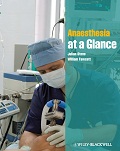A 47-year-old man, with a BMI of 45 presents for an elective laparoscopic cholecystectomy. When he had a dental extraction he was told he was a difficult intubation but has no more details. He has a Mallampati score of 3, reduced mouth opening and a thyromental distance of 5 cm.
-
1. What information leads you to suspect he might be a difficult tracheal intubation?
Show Answer
Correct answer: High BMI, past history, high Mallampati score, reduced mouth opening and reduced thyromental distance (normal >6.5 cm).
-
2. Does the patient need to have their trachea intubated?
Show Answer
Correct answer: Ideally yes. It is possible to perform these cases using an LMA, but this patient is at risk of airway soiling with bile-stained fluid (laparoscopy, obesity) and airway protection with a tracheal is strongly recommended.
-
3. Does the patient require a general anaesthetic?
Show Answer
Correct answer: Yes. It is not possible to carry out a laparoscopic technique using an epidural.
-
4. What are the risks of not intubating?
Show Answer
Correct answer:
- aspiration of gastric contents;
- failure to ventilate adequately during laparoscopy due to obesity and high airway pressures.
-
5. Is it safe to use a long-acting muscle relaxant?
Show Answer
Correct answer: Yes, provided that you are able to ventilate and oxygenate the patient with a bag and mask.
-
6. What other techniques/ equipment would you try if standard oral intubation fails with direct laryngoscopy?
Show Answer
Correct answer:
- ensure neck flexion and head extension;
-
laryngeal pressure and bougie.
Then try a secondary plan such as a glidescope or intubating via LMA (ILMA or fibre-optic scope and Aintree catheter). Some would try blind nasal or fibre-optic intubation under general anaesthesia.
N.B. at all times maintenance of oxygenation and anaesthesia (i.v./inhalational) are essential.
-
7. How would you confirm correct placement of the tracheal tube?
Show Answer
Correct answer: Visual confirmation if possible or capnography. If unsure remove the tube (‘if in doubt, take it out’).
-
8. What would you do if your primary and secondary intubation plans fail?
Show Answer
Correct answer: Wake the patient and postpone surgery.
-
9. What information would you give to the patient afterwards?
Show Answer
Correct answer: A detailed description of problem in a letter, including techniques that failed and worked – a copy of the anaesthetic chart is useful.
Additional information: A glidescope is a video laryngoscope that allows the vocal cords to be visualized on screen using a laryngoscope with an angulated blade. Once the vocal cords have been visualized, a tracheal tube is inserted.
An Aintree catheter is a device inserted through an LMA over a fibre-optic bronchoscope. Once the Aintree catheter is in situ, the bronchoscope and the LMA are removed just leaving the catheter. A tracheal tube is then ‘railroaded’ over the Aintree catheter, which is then removed.

